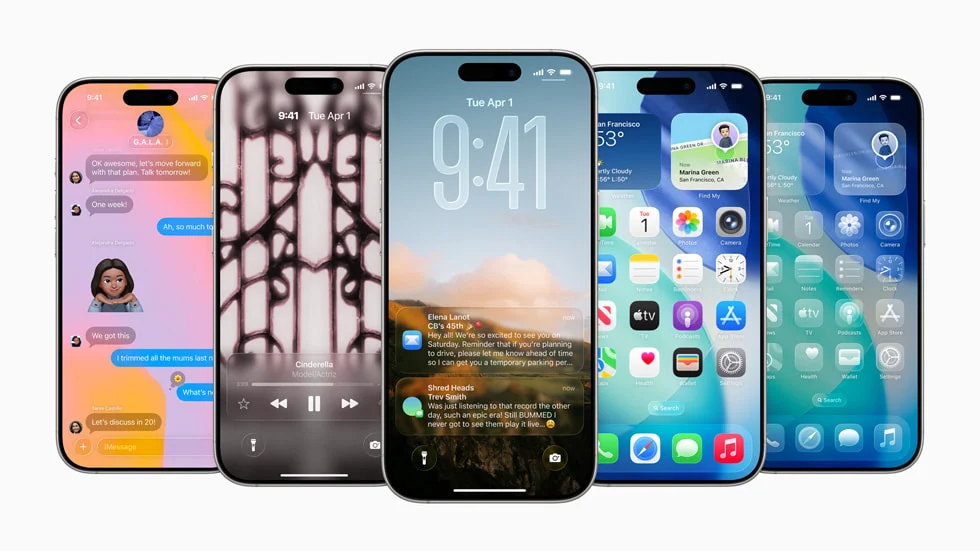By Rachael Davies
Copyright standard

Apple’s iOS 26 launched on Monday, September 15, bringing with it both a new aesthetic and a new suite of features.
If it hasn’t updated automatically, you can update your Apple device to iOS 26 by heading to General Settings, and following the instructions for an update.
Once done, you’ll be face to face with Apple’s new design language, Liquid Glass – which is just as fluid and responsive as it sounds.
There is a range of new features to match the new look, which we’ve broken down for you below.
First up: what exactly is Liquid Glass? On the face of it, it’s just a new look for Apple devices using iOS 26, but it doesn’t just change the aesthetics.
The translucent objects and icons in Liquid Glass make using multiple apps and features at once easier, with greater customisation options now available.
You can slot different apps together in the Control Centre, or arrange elements on your home and lock screens for a layout that’s wholly your own.
Liquid Glass also brings new subtle animations to in-app buttons to change how you interact with your phone.
You can choose between a minimalistic all-clear look or reduced transparency for more vibrancy, according to your preference.
Another change to animations is how notifications and alerts now ‘bounce’ into view at the top of the screen. Those notifications also have a dynamic knock-on effect to make widgets change size according to the importance and size of a notification, keeping everything you need to see visible.
In terms of new practical features, Messages has got a number of new features, including new custom backgrounds and reactions.
Perhaps most excitingly for anyone who gets frustrated when a plan never makes it out of the group chat, users can also create polls in group texts to make decision-making easier.
Live Translation has been front and centre of Apple’s marketing around iOS 26, promising easy communication even over language barriers.
Powered by Apple Intelligence (the company’s in-house AI), Live Translation is available in Messages, Phone, and FaceTime calls, so you can feasibly have instant translations not just over text, but also on voice and video calls.
Read more: How to turn off Apple Intelligence
Various buttons now shrink away when you don’t interact with them. For example, the camera app has been streamlined to hide additional modes behind a slider or big pop-up menus. The address bar and navigation buttons in Safari now condense down to a small button at the bottom of the screen as you scroll. To get to your tabs and controls you need to swipe the address bar button upwards or press the three-dot button.
Speaking of calls, you should be getting fewer calls from unwanted spammers with iOS 26, with the phone app now able to auto-screen calls from unknown numbers.
Users will be presented with an alert about suspicious numbers, and unwanted callers will be asked to give their name and reason for calling before the message makes it through to you.
It will place them on hold until you decide to pick up – and it can also wait on hold for you when you’re on the phone to businesses as well. It’s like a receptionist hidden in your phone.
A new Games app provides a fresh base for gaming on your iPhone, including your games library, a social feed of what your friends are playing, and replacing the old Game Centre for tracking milestone, competitions, and other gaming achievements.
Over in the world of tablets, the iPad gets the same visual redesign with Liquid Glass as the iPhone, complete with clear icons, hiding buttons, and even more updates to workflows with new multitasking capabilities designed specifically for the larger screen size that comes with an iPad.
That includes a Mac-style bar, ideal for those who want to use their iPad instead of a laptop or computer.
Similar window management features are included like a Macbook as well, with the option to swipe down from the centre of the top of the screen in an app to reveal the menu bar with all of the various functions, including the familiar options, like file, edit, view, window and help menus from the Mac.



